After visiting the Philippines several times, trips were limited to the Islands of Luzon and Boracay – two of the over 7,000 islands of the archipelago nation. With every visit, the Philippines never failed to live up to its “more-fun-in-the-Philippines” motto. With its hospitable people, tropical climate and natural wonders, the Philippines remains one of the world’s top vacation destinations.
Though I have had the pleasure of visiting areas such as the coastal province of Zambales’ Subic Bay, Metro Manilla’s Mall of Asia, and the inland province of Pampanga’s Clark Freeport Zone, the places I have visited barely scratches the surface of the places left undiscovered.
The following are the top five places I have visited or have yet to scratch off as the places I have visited on my bucket list.
5. Pasay City: SM Mall of Asia
Raised in North America, I often heard of the immensity of Canada’s West Edmonton Mall, I often heard “there’s nothing that couldn’t be bought at the West Edmonton Mall,” I often heard during the heyday of the National Hockey league’s Edmonton Oilers in the 1980s. If one claimed it was a shopping mall, while another claimed it was a sports complex, and another argued it was an indoor water park, everyone would win. Up until the early 1990s, the West Edmonton Mall was commonly dubbed “World’s Largest.” By 1992, Pasay’s SM Mall of Asia was completed, overtaking the Canadian mall for the title. At 433,000 square meters, the mall situated in Pasay City surpassed the West Edmonton Mall in size, quickly gaining a reputation as an international megacenter.
What makes SM Mall of Asia so great is that there is something for everyone. I like shopping malls much like I prefer bars, not so much for drinks as I am a light drinker, but for the clientele and food. When going to shopping malls, thanks to websites such as Amazon and eBay, shopping for deals is often the last thing that comes to mind upon entering a shopping mall. I would rather go for the exercise or browsing, people watching, or a bite to eat. If you are like me, there is no category left unchecked at SM Mall of Asia. North American expatriates can feel at home with a choice of over 200 eateries which include Wendy’s and T.G.I. Friday’s and if memories of Wayne Gretzky and his Stanley-Cup-Champion Oilers gives you the urge to lace up your skates for a pick-up game of hockey after basking on a tropical beach, the facility also features an Olympic-sized hockey rink. In addition, concertgoers can enjoy performances at Mall of Asia’s 15,000-seat area. Perfectly suited for “malling,” the unofficial national past time of the Philippines, from the avid shopper to the eager sports enthusiast, SM Mall of Asia offers a diversion from everything, including shopping.
Conveniently located, by taxi, SM Mall of Asia is an estimated 12-minute from Ninoy Aquino International Airport. Bus lines adjacent to the mall take visitors to and from Pasay connecting to destinations throughout Luzon. Bus fare ranges between ₱125 ($2.50) and ₱1000 ($20.00).
4. Cebu
Cebu, a city I heard so much about but have never visited, is the Philippines’ second-largest and oldest municipality. Prior to the arrival of Spanish settlers, Cebu was founded by Hindu price, Sri Lumay. During the 16th century, like a double-edged sword, Cebu was a stop on Ferdinand Magellan’s historic world circumnavigation which led to his rise and demise. Shortly following Magellan’s expedition, Spanish settlers arrived with Catholic missionaries in an attempt to spread Christianity to islanders. Later that century, Cebu became an intermediary port for ships from New Spain (Mexico) and central base for further exploration of the then-uncharted archipelago.
Nestled in the heart of the Central Visayas, present-day Cebu City is a sprawling urban area with Colon Street as its central road. Once known for its theaters and unique boutiques, Colon Street has become less commercialized since the 1990s but remains a mainstay for locals and those who want to travel off the less touristy path. Shop where the locals shop on Colon’s outdoor market. Buy fresh produce from a local vendor or local supermarket and bargain hunt for most goods and service everywhere you turn. Unlike chain stores and shopping malls, you can utilize your untapped bargaining skills by price haggling for the best price for anything from seafood to mobile phones.
For the less-skilled shoppers who prefer to shop in the comfort of an air-conditioned building, there is SM City Seaside Cebu, SM City Consolacion, Robinson’s Galleria, and Ayala Center. Like SM’s Mall of Asia, City Seaside Cebu is a 470,486 square-meter mall with amenities similar to SM Mall of Asia, the mall features an Olympic sized skating rink, an 18-lane bowling center, seaside ocean-view tower muli-plex cinema, and full-sized arena while SM Consolacion is a down-scaled version for the kind of people who frequent malls for reasons nature intended: shopping and “malling” to seek refuge from the tropical heat in an air-conditioned building. Robinson’s Galleria is a four-story complex that features an attached 153-room Summit Galleria Hotel. For those in search of fast fashion standards or high- end European designer items, Cebu’s Ayala Center is an unenclosed shopping facility with an open-air-garden common area as its focal point.
A significant site of Filipino and world history, remnants of Ferdinand Magellan’s presence and early Spanish influence is apparent in Cebu City’s architecture and culture. Visitors will be impressed by Basilica Santo Nino. Considered the Philippines’ first church, Basilica Santo Nino covets the infancy of Christ. Before Magellan’s subsequent death, he left behind a giant cross. Presently on display by the gates of El Nino, the cross has endured the test of time for nearly 500 years.
3. Bicol: The Chocolate Hills
Since childhood, the surreal landscape of Bicol’s Chocolate hills has never ceased to amaze. The seemingly infinite terrain of uniformly-shaped hills often baffles onlookers, making them wonder if G-d’s sense of humor was at work during its creation. Like the hand of G-d squirted evenly-proportioned chocolate drops from the sky onto the Isle of Bicol, the Chocolate Hills are the most unique topographical formations – if not most delicious.
2. Boracay
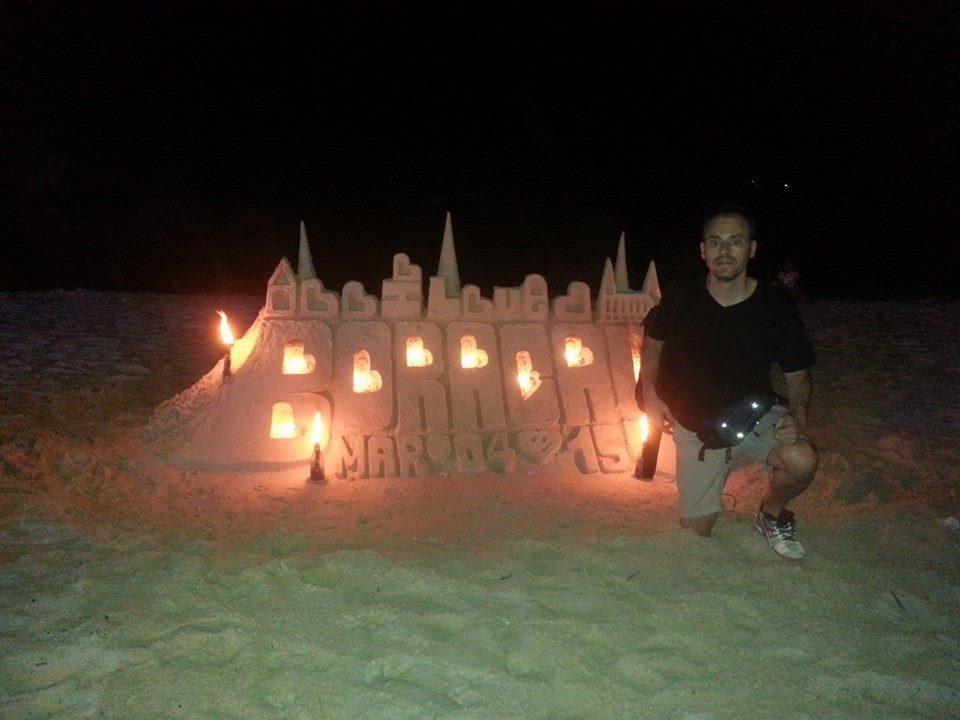
First night at Boracay
From childhood, I recall seeing people in the neighborhood plaza during summer walking in tee-shirts with images of sand, seashells, and palm trees printed along the chest area with the distinctly-calligraphed Boracay below it. For many years, I believed Boracay was a mythical place that existed nowhere, but one’s imagination – no different from unicorns. I later discovered the tropical island was real, but seemingly out of reach – thousands of miles away in the Philippines.
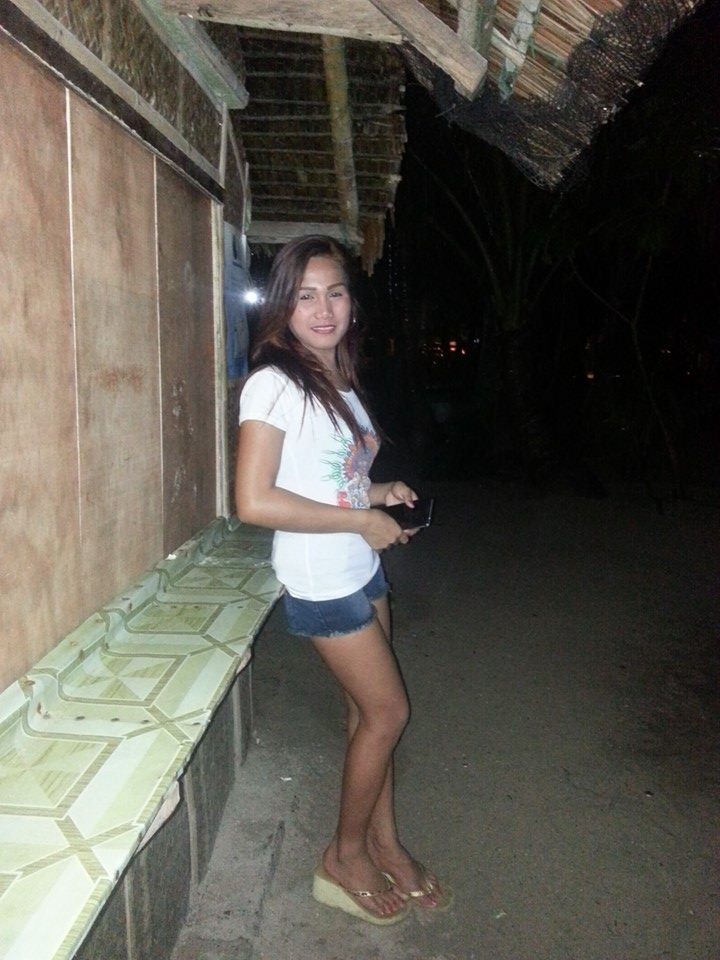
Boracay Bakla
Years later, job opportunities in Asia made the dream a reality. Before returning to North America from Asia after a 4-year stint and frequent visits to Luzon, I searched the internet to arrange my trip for my once-in-a-lifetime trip to the Western Visayan island of Boracay. Browsing the internet, there were many domestic flights from Manila to Kalibo by discount airlines such as Air Asia and Cebu Pacific available for under ₱1000 ($50). Rather than look for hotel accommodations, I searched for a more economical alternative. On past trips, booking properties via Airbnb sufficiently filled the void of finding adequate centrally-located lodgings for all occasions. After careful consideration and taking the expertise of a coworker, I decided to reserve a beachfront apartment on Boracay’s Station 3.
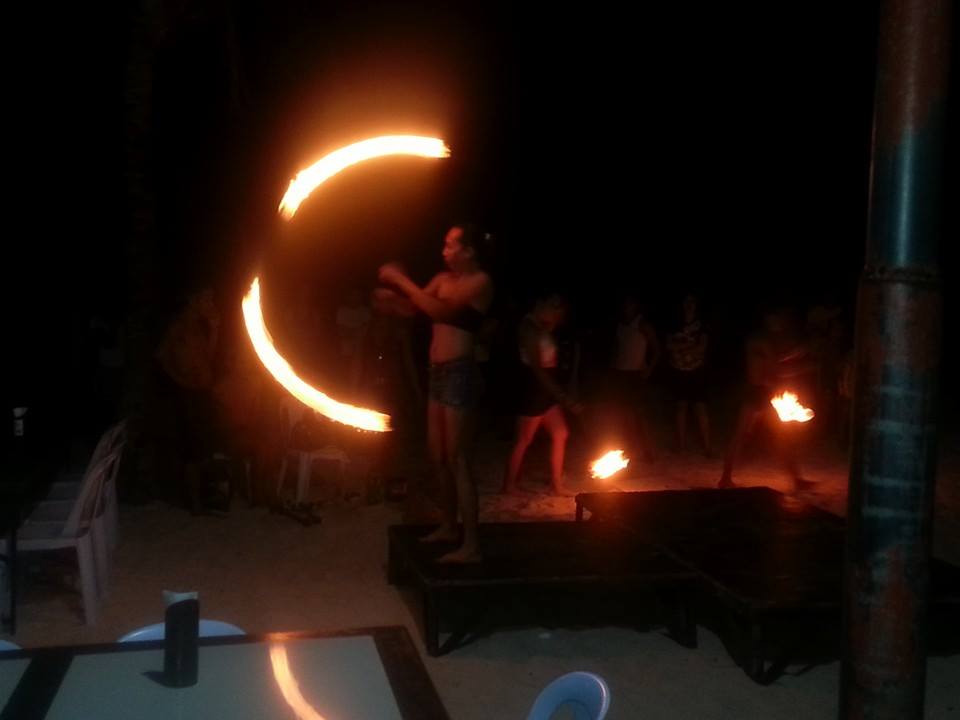
Fire dancer at Boracay’s Station 2
After departing from Ninoy Aquino’s Terminal 3, I arrived at Kalibo Airport after a one-hour flight. A 15-minute bus ride and 5-minute boat ride later, I docked at Station 1. Looking into the ocean water, its clarity amazed me. Of all the beaches I have visited, from shores of Santa Monica to the Baltic Sea, the seawater glistening under the tropical sun on the white sand looked more like the chlorinated water from a swimming pool – something I only saw in pictures. Walking along the beach for the first time, sand-castle-like monuments read “Boracay,” the date, and others were in the shape of mermaids and sea turtles. Other than the mob of international tourists, I was impressed.
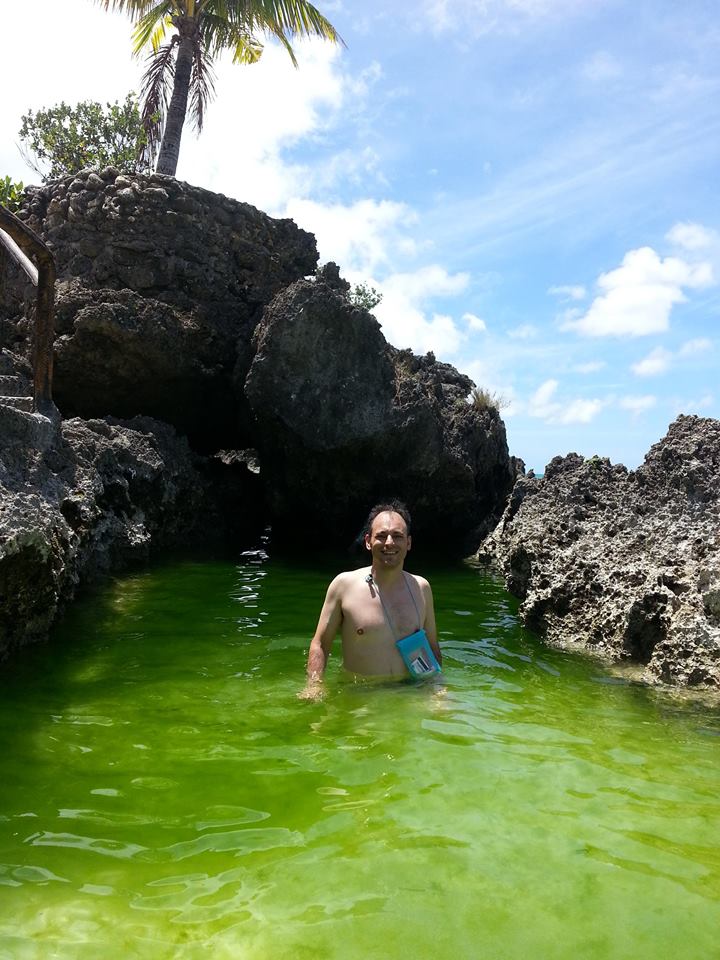
Tiny cove at Boracay’s Station 1
The Castilian-style apartment complex I resided during my stay had a charm about it. After signing in, I was happy with the amenities of the third-floor furnished studio apartment reserved a month in advance. After a day on the island I noticed, unlike the other stations 1 and 2, Station 3 was intended for long-term guests. My next-door neighbors were a couple from Eastern Europe with a local housekeeper and others were North American businessman who made transactions remotely via internet. After spending time in Scandinavia in my youth, I sought solidarity with Swedish expatriates and vacationers, initiating conversation on topics I assumed we shared an interest in such as Swedish pop music, ice hockey, and tennis. The Swedes frequented a bar with a dark blue banner that hung from the ceiling with a mosquito in a circle that read, “Mosquitos are not allowed inside.”
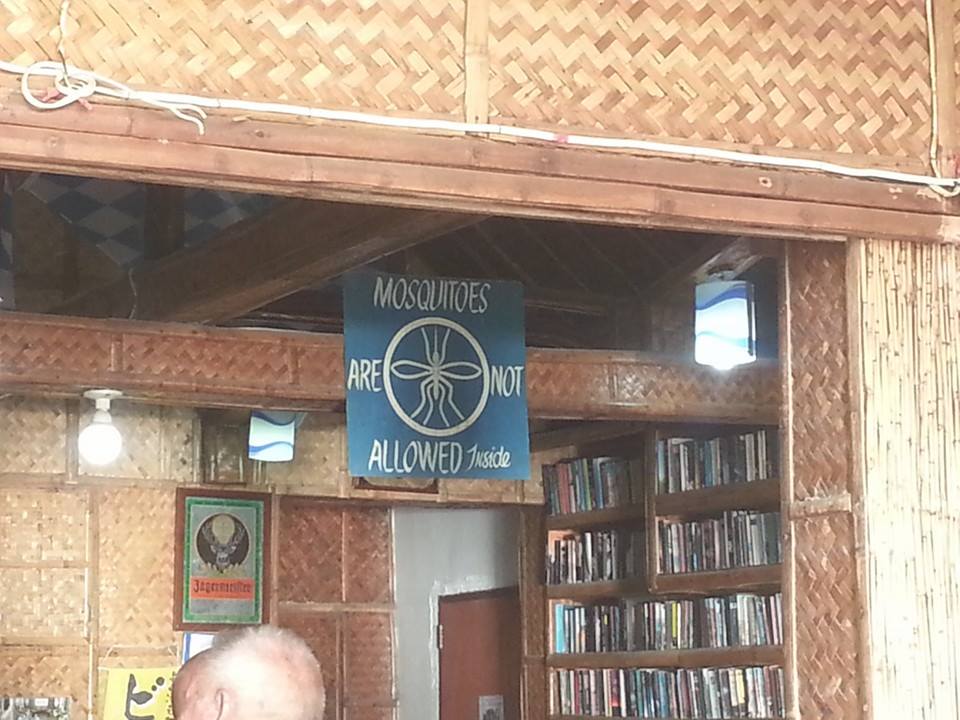
Expat bar at Boracay’s Station 3
Throughout the trip, straps of the thong sandals worn regularly throughout the trip dug between my toes and the sides of my feet, causing them blister and sore. Despite the pain, I made an effort to make the most out of the tropical holiday. I joined coworkers from my job for evening meals while practicing my dance moves with island fire dancers. Though the pain in my feet hindered me from taking an ocean tour of the surrounding sea life, I managed to go on a banana boat ride. The banana boat, a long yellow giant floatation device tied to the back of a motorboat was more of a water ski and life preserver built for six people than a boat. Midway through the ride, the inflatable tube tilted from its base, causing me to fall off. Submerged in the water, the supposedly “watertight” protector laid over my neck that contained my mobile phone and Philippine Pesos became as drenched with water as my body left unprotected.
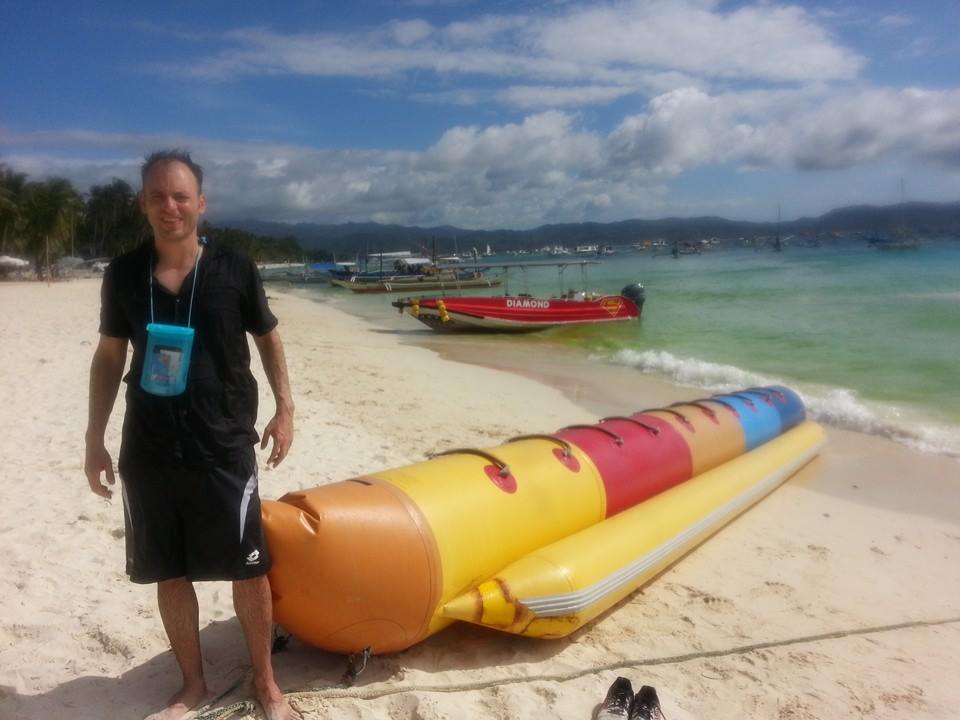
Drenched after a banana boat ride
At ₱2,500 ($60) a night, the Station 3 accommodation was a good value but wasn’t enough to keep a tinge of buyer’s remorse from setting in. On nearby Station 2, the Henann Regency Resort and Spa was equipped with canvass reclining chairs on the sands of the beachfront property. “You can’t sit there,” an employee said as women who joined me tried to relax beachside. Walking up the promenade, to Station 1, I noticed the water was much clearer and less congested with tourist. When I advanced beyond the main strip of Station 1, I noticed one of the most unique and authentic resorts I have ever seen: The Spider House. Constructed out of most unprocessed materials imaginable, the resort seemed utilitarian yet luxurious. The tree-house style quarters suspended over the transparent ocean waters by palm-tree-constructed pillars seemed to represent a Boracay from a bygone era, before it became a modernized and commercialized tourist attraction. Beyond the Spider House, there were secluded coves which appeared unrestricted to the public.

Often compared to the Maldives, Boracay is definitely a place worth visiting. Round-trip airfare from New York City to Caticlan are around ₱36,000 ($900), however, flights through Kalibo are often a cheaper alternative. Traveling within Asia, Cebu Pacific and Air Asia offer flights departing from major cities in the Pacific Rim. The quintessential tropical island, one could argue you haven’t really visited a tropical island until you have visited Boracay.
1. Palawan
Palawan, the Philippines’ largest province, rivals Boracay in natural beauty but surpasses it in historical significance. In ancient times, Palawan was home to the Palawano and Tagbanwa, the area’s first settlers and was a key island in the archipelago’s Indian and Hindu culture. During the onset of the archipelago’s Spanish period, remnants of Ferdinand Magellan’s fleet sought refuge on the island following his death.
Presently, Palawan remains a popular tourist attraction to those “off-the-beaten-path” travelers in search of the world’s less charted natural wonders. Snorkelers will enjoy viewing the ocean floor at Coron. Considered one of the most breathtaking spots in the world, divers can a can search for objects ranging from sunken Japanese warships to exotic marine vegetation off Coron’s shores. From Coron, it is possible to take a short ride by ferry to El Nido. Arguably the region’s most famous tourist destination, El Nido. Unlike Boracay, El Nido has picturesque waterfalls and several secluded beaches such as Nacpan which can be accessed mainly by tricycle or bicycle. Last but not least is Sabang’s underground river. Stretching over 20 Kilometers, regular tours safely go 4 kilometers into the depths of this geological landmark.
Flights arrive regularly at Puerto Princesa International Airport and are available domestically and internationally from major Asian cities by low-price airlines such as Air Asia and Cebu Pacific.